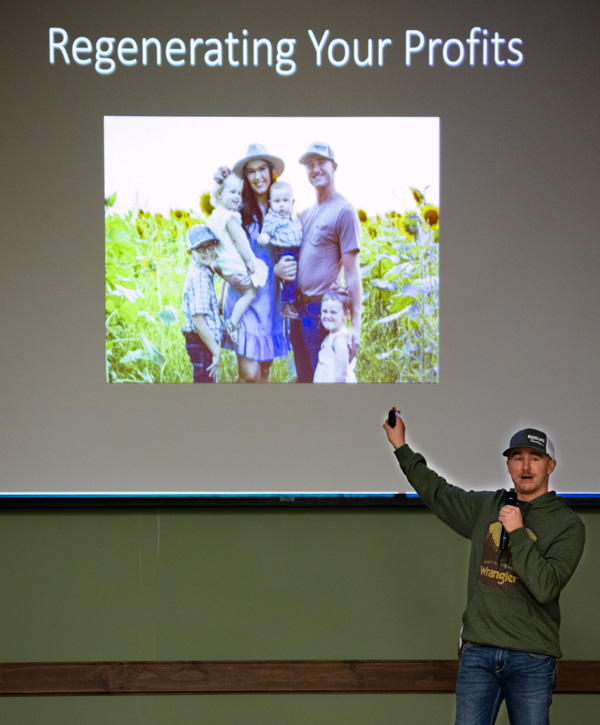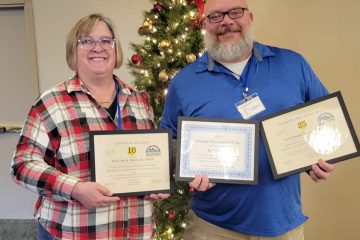
Jasper, Missouri farmer Macauley Kincaid speaks at the 2024 Conservation Cropping Seminar. Macauley has gained renown for his regenerative agriculture practices and said his main goal is “to be profitable, and do the best for the environment we can.”
The Illinois Department of Agriculture hosted the 2024 Conservation Cropping Seminar Wednesday January 31 at the IDOA Building at the Illinois State Fairgrounds in Springfield.
The day began with a presentation by Macauley Kincaid of Jasper, Missouri, who has gained renown for his regenerative agriculture practices and has been featured in articles and conferences. Kincaid began by saying his main goal is “to be profitable, and do the best for the environment we can.” He focused on conservation principles of minimizing disturbance, keeping a living root in the ground as long as possible, keeping the soil covered, diversity, and animal and insect integration.
“Soil’s not endless. There is a stopping point.”
He said the average field loses 5.8 tons of soil per acre a year, about the thickness of a dime. And that results in 36 billion tons of soil lost in the USA every year.
“We need to keep our soil on our farms. Otherwise other people are going to tell us how to farm,” Kincaid said. “I don’t want anyone telling me what I can and can’t do on my farm.”
Other speakers during the day were from Earth Optics, Calmer Corn Heads, and Banded Ag, LLC.
The day concluded with a panel discussion featuring Dennis Frey, of Dahlgren, Frank Rademacher, of Gifford, and Steve Stierwalt, of Sadorus. The discussion was led by Jeff O’Connor, of Kankakee, of the Illinois Soybean Association. Frey formerly worked as a resource conservationist for the Hamilton County SWCD, Stierwalt serves on the Champaign County SWCD, and O’Connor as chair of the Kankakee County SWCD.

The Conservation Cropping Seminar ended with a panel discussion with farmers (from left) Dennis Frey, Frank Rademacher, Steve Stiewalt, and Jeff O’Connor.
The day was introduced and wrapped up by Dr. Michael Woods, executive director of the Association of Illinois Soil & Water Conservation Districts. He opened the event by looking to our history to celebrate the creation of soil and water conservation districts. He highlighted that on February 26, 1937, President Franklin D. Roosevelt wrote to governors and outlined the case for effective soil management, including the powerful phrase: “The nation that destroys its soil destroys itself.”
Woods noted that President Roosevelt’s plea related directly to extreme weather events occurring across the nation during the pivotal Dust Bowl years. Specifically, Woods noted that Roosevelt’s action demonstrated political leadership in soil management and conservation to address the risk of its wholesale decline and degradation.
Woods celebrated those in attendance for their commitment to conservation and soil health and reminded all that prioritizing soil conservation practices to optimize its natural potential requires a step change in how we value this resource.
While closing out the seminar, Woods remarked that responding meaningfully to our current soil health and nutrient loss reduction strategies requires elevated ways of thinking. Embracing the opportunities created by proven conservation practices highlighted could be a central focus of our collective response. Or as President Roosevelt as declared on March 1, 1936 while signing into law the Soil Conservation and Domestic Allotment Act, ”The history of every Nation is eventually written in the way in which it cares for its soil.”


